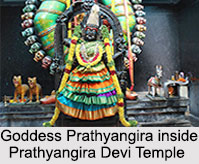 Sholinganallur is located in Chennai in the Indian state of Tamil Nadu. Sholinganallur was annexed in to Chennai Corporation in 2011. It is a rapidly developing suburb of Chennai. The Information Technology business Parks and Special Economic Zones (SEZ) have contributed immensely for the all round development of the Sholinganallur`s infrastructure, economy and population. Several other IT based suburbs like Perungudi, Siruseri and Taramani surround the town on all its sides. The town is rated as the biggest assembly constituency in Tamil Nadu. Recently it has been added to Chennai Corporation. According to the 2001 India census, this place had a population of 15,519.
Sholinganallur is located in Chennai in the Indian state of Tamil Nadu. Sholinganallur was annexed in to Chennai Corporation in 2011. It is a rapidly developing suburb of Chennai. The Information Technology business Parks and Special Economic Zones (SEZ) have contributed immensely for the all round development of the Sholinganallur`s infrastructure, economy and population. Several other IT based suburbs like Perungudi, Siruseri and Taramani surround the town on all its sides. The town is rated as the biggest assembly constituency in Tamil Nadu. Recently it has been added to Chennai Corporation. According to the 2001 India census, this place had a population of 15,519.
Etymology of Sholinganallur
There are two stories, which the native people mostly consider for the etymology of this place. One is the name that has been derived from the words Shiva Linga and Nallur, which means a good place where the Shiva Linga is installed. The other one is the name has been derived from the words Chola, Linga and Nallur, which means a good place where the Cholas installed Shiva Linga.
Educational Institutes of Sholinganallur
Sholinganallur has several schools and colleges to serve the educational needs to the society. Some of the important schools of this place are Government Higher Seconary School, Gateway School, Sacred Heart Matriculation Higher Secondary School, Sree Iyyapa Matriculation Higher Secondary School, Ellen sharma Matriculation Higher Secondary School, Amelio Early Learning Center and Bala Vidya Mandir. Apart from schools the town also has several renowned colleges; some of them are Jeppiaar Engineering College, St. Marys School of Management Studies, Sri Sivasubramaniya Nadar College of Engineering, Sathyabama University, St. Joseph`s College of Engineering, Shree Motilal Kanhaiyalal Fomra Institute of Technology, Jeppiaar SRR engineering college, Mohamed Sathak College of Arts and Science, Anand Institute of Technology, NTTF Information Technology Centre and others. The National Maritime University, the first of its type in India, is being constructed in Sholinganallur. Provisions for National Maritime Museum, Aquarium, Food Courts, residential complex have also been constructed.
Pilgrimage Centres in Sholinganallur
Sholinganallur serves as an important pilgrimage centre, which is visited by many devotees. The town houses a temple known as Sholinganallur Prathyangira Devi Temple. It is dedicated to Goddess Prathyangira, in her incarnation of Shri Maha Prathyangira Devi. The deity is said to be a powerful repellent of all the evil influences caused by witchcraft. She is believed to possess power to punish Adharma. The temple is situated close to the junction and halfway down the link road of OMR and ECR.
Other renowned temples in Sholinganallur are Sri Subramanya Swamy Temple, Durgai Amman Temple, Selli-Amman Temple, Pazhandi-Amman Kovil, Thulukanathu Amman Kovil, Naga-Amman temple, ISKON Temple in ECR, Selva Vinayagar Temple in Akkarai, and Raja Ganapathi in Uthandi.
The town has seven famous churches also, which are Infant Jesus Roman Catholic church, Living Spring English Church (Assemblies of God), Evangelical Church of India (ECI), Church of South India (CSI), Advent Church and Fountain of Life Assemblies of God Church.
The place houses some Mosques as well which deserve a special mention. The mosques are Masjid-e-Noor, Masjidur Rahman, and Sathak Masjid.
Visiting Information to Sholinganallur
Four rail stations are near to this place and they are Velachery, Perungudi, Puzhuthivakkam and Tiruvanmiyur Railway Stations. Chennai Airport is located around 11 km away from this place. Regular buses are available from Chennai Central to Sholinganallur.



















